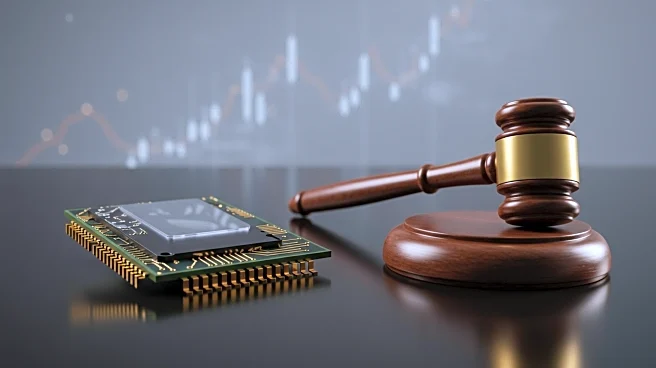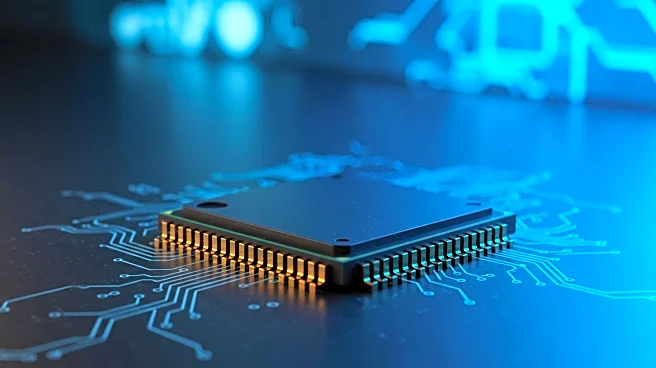What's Happening?
President Trump announced that the U.S. government has acquired a 10% stake in Intel, a major Silicon Valley company, through the conversion of $11.1 billion in previously issued funds. This move comes as Intel faces significant challenges, including workforce reductions and past leadership missteps. The acquisition is part of a broader strategy to bolster domestic manufacturing and reduce reliance on overseas production, particularly in the tech sector. Intel's CEO, Lip-Bu Tan, has expressed gratitude for the government's confidence and commitment to advancing U.S. technology leadership.
Why It's Important?
The U.S. government's stake in Intel represents a significant intervention in the tech industry, potentially influencing corporate strategies and market dynamics. This move could impact Intel's operations and its ability to compete globally, especially in the context of ongoing trade tensions. Critics argue that such government involvement may lead to unfavorable market conditions and pressure on other tech companies. The acquisition reflects the Trump administration's focus on domestic production and technological advancement, aiming to strengthen the U.S.'s position in the global tech race.
What's Next?
The acquisition may lead to increased scrutiny and debate over the role of government in private sector operations. Intel's future strategies and market performance will be closely watched, particularly in relation to its stock price and competitive positioning. The administration's broader economic policies, including trade and manufacturing initiatives, may be influenced by this development. Stakeholders such as investors, industry leaders, and policymakers will likely assess the implications for the tech sector and the U.S. economy.
Beyond the Headlines
The government's stake in Intel raises questions about the intersection of public and private interests, potentially affecting industry standards and innovation. The move may set a precedent for future government interventions in the tech sector, influencing regulatory and policy frameworks. The long-term impact on U.S. technological leadership and economic competitiveness will be a key area of focus, as stakeholders evaluate the benefits and risks of such government involvement.












